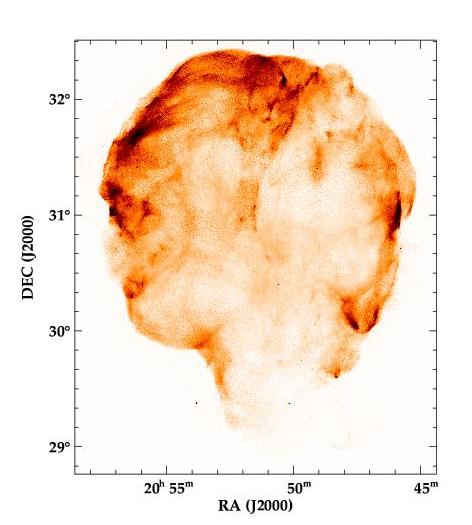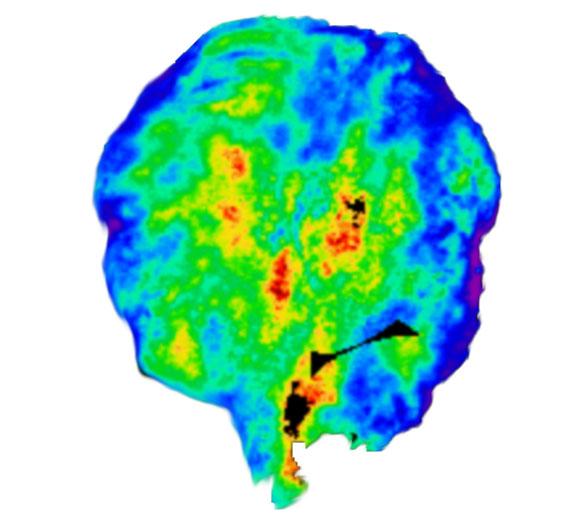
Credit: N. Levenson (Johns Hopkins), S. Snowden (USRA/GSFC)
Shards of a Star: A High-resolution X-ray Image of the
Cygnus Loop
The Cygnus Loop is a supernova
remnant in the constellation Cygnus. It represents the remains of a
star which exploded about 20,000 years old. The image on the above left
shows a high resolution X-ray picture which shows the extremely hot (about
1 million degree) gas which is produced as the shards of the star crash
into other clouds of gas and dust in the space around the star. This image
was obtained by stitching together a number of individual pictures taken
with the ROSAT High Resolution Imager
detector. Note that the hot gas is generally circular in shape; this
suggests that the explosion of the star was spherically symmetric, that is,
that the explosion was equally strong in all directions. However, there is
a "blowout" region in the south of the loop (toward the bottom in the image
above) which probably represents a region in which the surrounding space is
of especially low density. The image on the right is a "temperature map"
of the hot gas in the Cygnus Loop obtained by the ROSAT Position Sensitive Proportional
Counter (PSPC). Cooler material is purple-blue, hotter material is
yellow-red (regions of no data are black). This temperature map shows that
the interior of the Loop is hotter than the edge. Studies of X-ray
emission from supernovae provide a very good way to measure the details of
the interaction of the supernova ejecta with the interstellar medium. See
the ROSAT Cygnus Loop
gallery for more X-ray images.
Last Week *
HEA Dictionary * Archive
* Search HEAPOW
* Education
Each week the HEASARC
brings you new, exciting and beautiful images from X-ray and Gamma ray
astronomy. Check back each week and be sure to check out the HEAPOW archive!
Page Author: Dr. Michael F.
Corcoran
Last modified May 26, 2001



